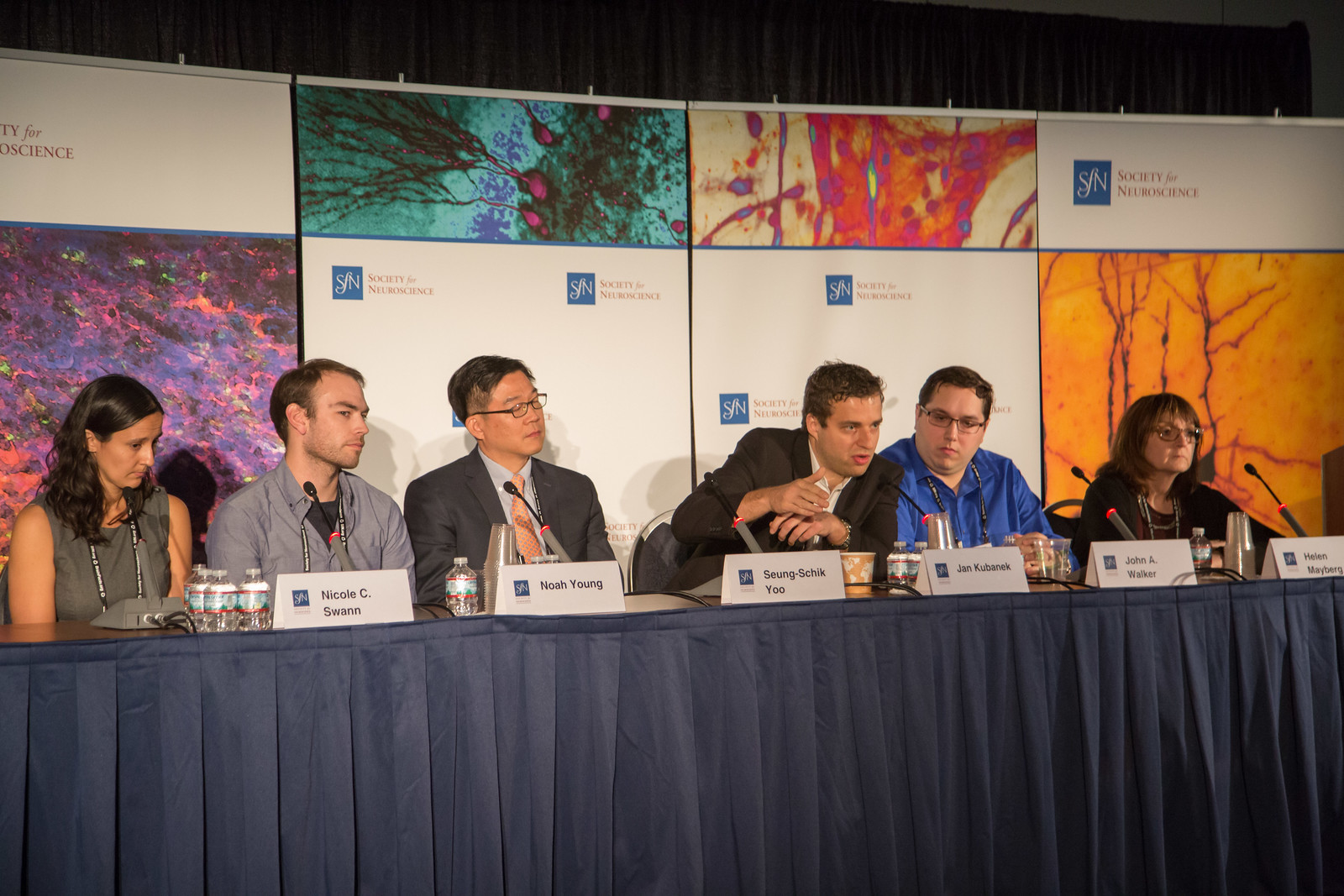
Neuronline Spotlight: How to Build, Fund, and Maintain Collaborations
In the push to uncover answers to complex research questions about the brain and nervous system, neuroscientists around the world are increasingly forming collaborations bridging teams, institutions, disciplines, and countries. These collaborations are helping scientists to work more efficiently, creatively, and comprehensively in the pursuit of discovery.
To help you to learn how to initiate collaborations and make them their most productive, SfN’s training and networking website Neuronline regularly publishes videos, webinars, interviews, and articles on how to set up, navigate, and fund various types of collaborations and on related topics. Explore the three resources below to get started.
A Look at the Intersection of Scientific Rigor, Big Data, and Interdisciplinary Training
The Human Brain Project (HBP) is “trying to develop infrastructures so the scientific community can conduct experiments using big data approaches for simulating brain models,” explains Alois Saria, professor and head of the experimental psychiatry unit at the Medical University of Innsbruck, Austria, and director of the HBP’s Education Programme. Funded by the European Union and with 120 partners, HBP is a collaboration of scientists from various disciplines — engineers, computer programmers, neurobiologists, and physicians. “Overall, there has to be a paradigm shift and development of new university curricula that focus more on linking different disciplines … to serve research in the best way possible,” Saria notes in this article.
Funding Opportunities to Build Interdisciplinary Neuroscience Research for the Future
As the neuroscience field evolves, NSF is focusing its training and research support on team-based, interdisciplinary strategies. In panel discussion at Neuroscience 2017, 13 NSF representatives and investigators awarded NSF grants for collaborative and/or international research shared opportunities available to trainees and PIs around the world. Learn about these opportunities as well as strategies that can help you to create an effective research proposal in this video.
Using Optogenetics to Understand the Neurocircuitry of Addiction
“I’ve been excited about our ability to identify critical neurocircuit nodes, or cell types, and their properties to see how a given cell type, or connection between them, can orchestrate animal behavior. We're still only scratching the surface of our understanding of how neurocircuits orchestrate behavior, so I’m optimistic about the future of this work,” says Garret Stuber, an associate professor at the University of North Carolina and the 2017 winner of the Jacob P. Waletzky Award. Read about his research aimed at understanding the neurobiology of addiction and reward, and the techniques he’s using to drive greater insight and eventually identify novel targets for future therapeutics.
About Neuronline
Neuronline, SfN’s home for learning and discussion, helps neuroscientists to advance in their training and career and to connect with the global scientific community year-round. Expand your skillset, learn new perspectives, and strengthen your network through Neuronline’s hundreds of resources, including SfN annual meeting event recordings, research summaries, expert interviews, downloadable toolkits, and more. SfN members enjoy unlimited access, including participation in SfN webinars and community discussion forums, while non-SfN members can access five resources of their choosing per month. Join SfN or renew your membership to gain access to these and other exclusive SfN member benefits.






















